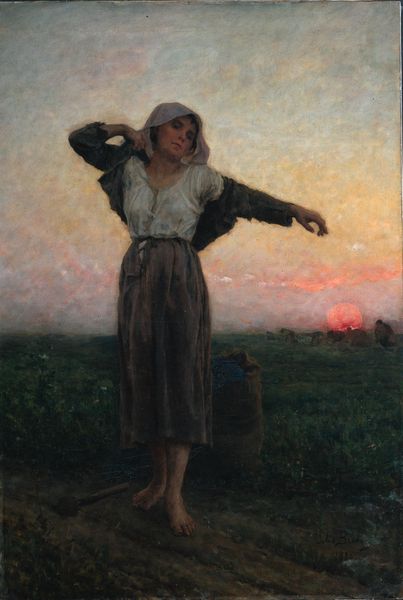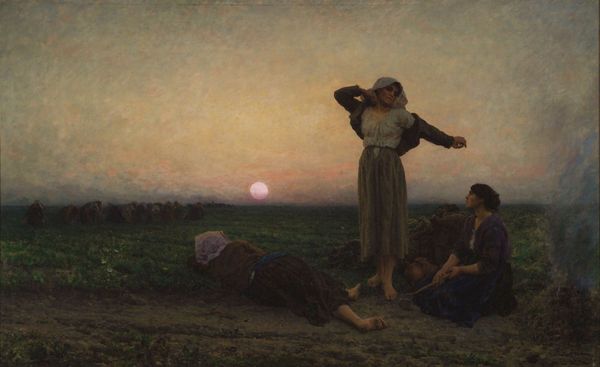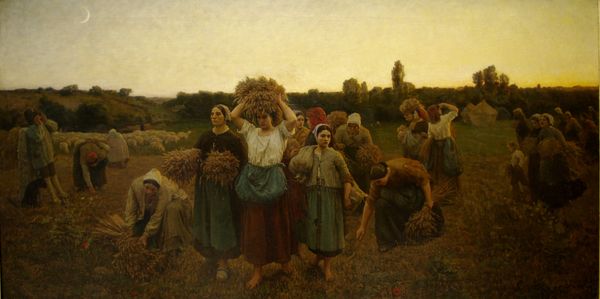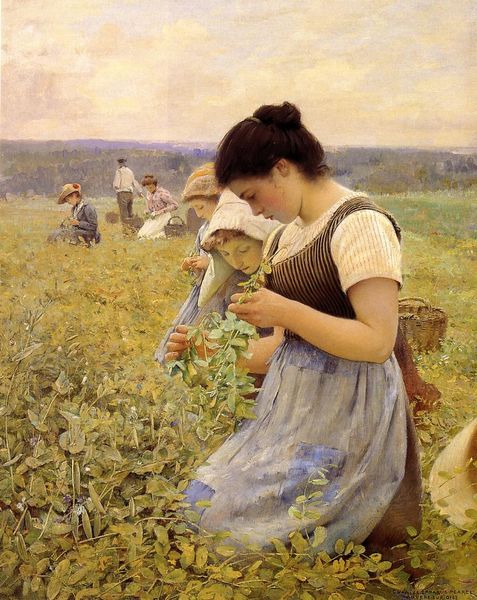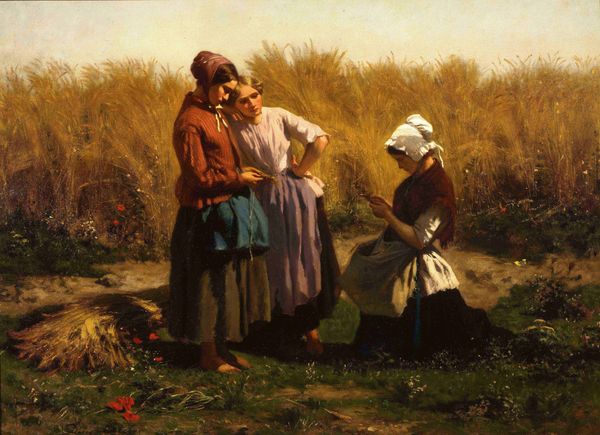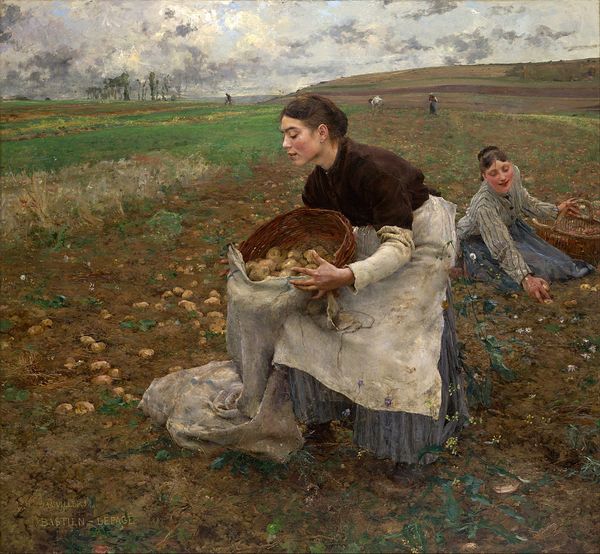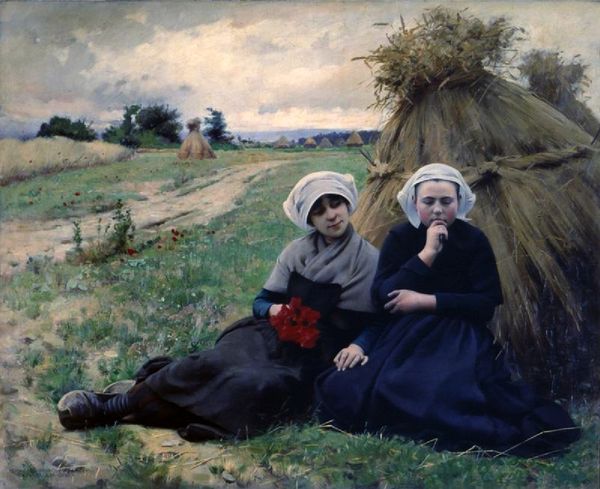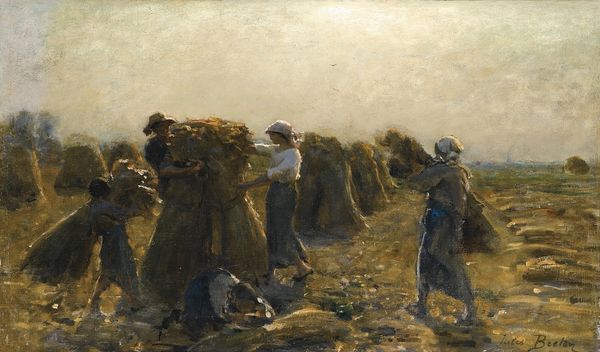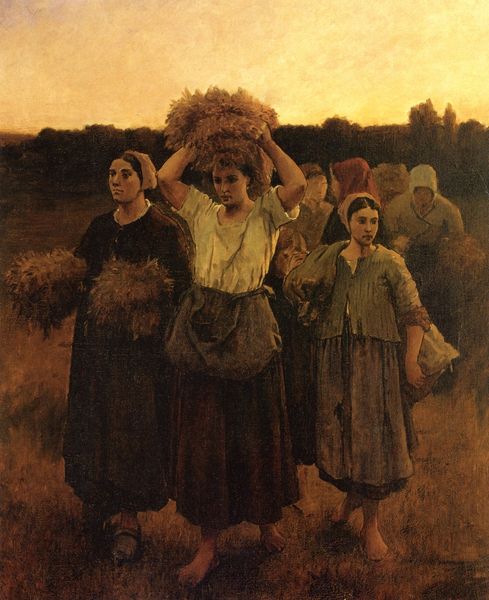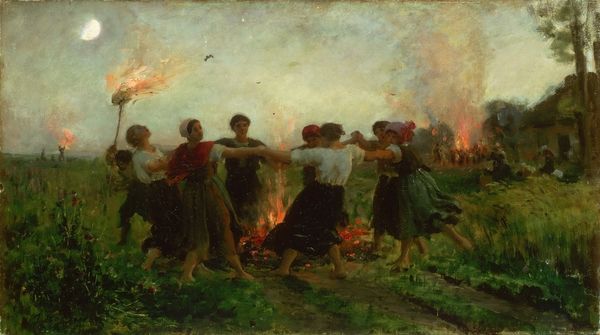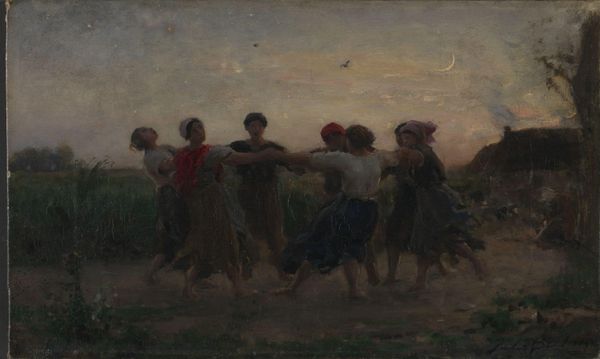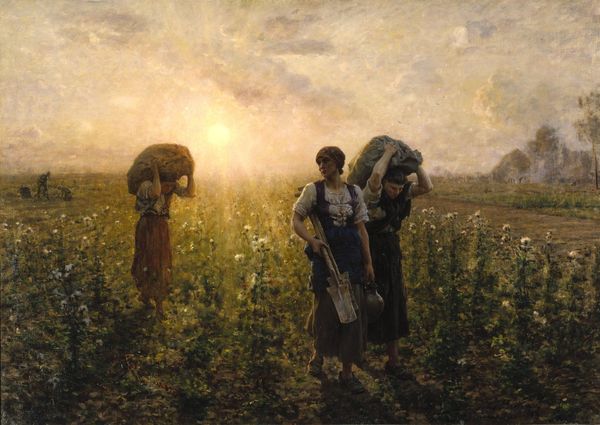
Copyright: Public domain
Jules Breton’s painting captures a poignant moment with a harmonious blend of earth tones and soft light. Dominating the foreground are three women depicted against an expansive field. The figures’ positioning guides the viewer’s eye from the dynamic call of one woman to the burdens carried by others. Breton uses a semiotic vocabulary to frame rural life. The sickle held aloft becomes a signifier not just of labor but of the end of the day's work. The moon, subtly placed, marks the passage of time and the cyclical nature of agrarian life. The call itself can be interpreted as a cultural code—a communal signal that reinforces social bonds. In its formal structure, Breton’s painting transcends mere pastoral depiction. It functions as a commentary on labor and community. The arrangement of figures and the visual weight given to tools and harvest suggests an engagement with broader societal ideas about work, identity, and the rhythms of nature.
Comments
No comments
Be the first to comment and join the conversation on the ultimate creative platform.
